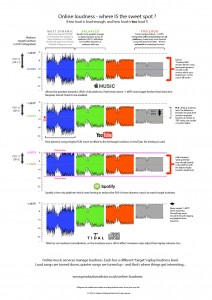How Loud Should Your Stream Be?
Since music began to shift more towards digital, recordings have been generally getting louder – much louder than they were when vinyl was the dominant record format. But louder isn’t necessarily better…
Keeping Up With The Thin White Jukebox
In terms of short term impact, humans tend to think the louder something is, the better it sounds; so if you listen to one song at a particular volume, and then listen to another song at a louder volume, you will probably come away with the impression that the second song actually sounds better.
Back when jukeboxes were a thing, it was quite important for your song not to sound quieter than the song preceding it; similarly, you needed your song to sound loud enough as part of a radio playlist (though in practice, radio stations use their own compressors to ensure an even level).
Nowadays, people are listening to a lot of music via online streaming services – and most of these have various degrees of compression/level matching technology applied to them.
The Roaring Stream
So what’s the problem? Well, you can compress the waveforms to make the recording sound louder, but in doing so you are also diminishing the dynamic range of the recording – reducing the difference between the quiet parts of the recording and the loud parts.
This differential contributes a lot to the impact of music, and reducing the dynamism can have a profoundly negative impact on listening enjoyment – particularly over longer listening periods.
Ian Shepherd has written extensively about dynamic range and the loudness wars over at the Production Advice site, and recently compiled an interesting infographic which illustrates the different loudness profiles of four key streaming sites: Spotify, Apple Music, YouTube and Tidal.
Click on the image on the right for a larger view, or pop on over to Ian’s site for more details on his methodology.
